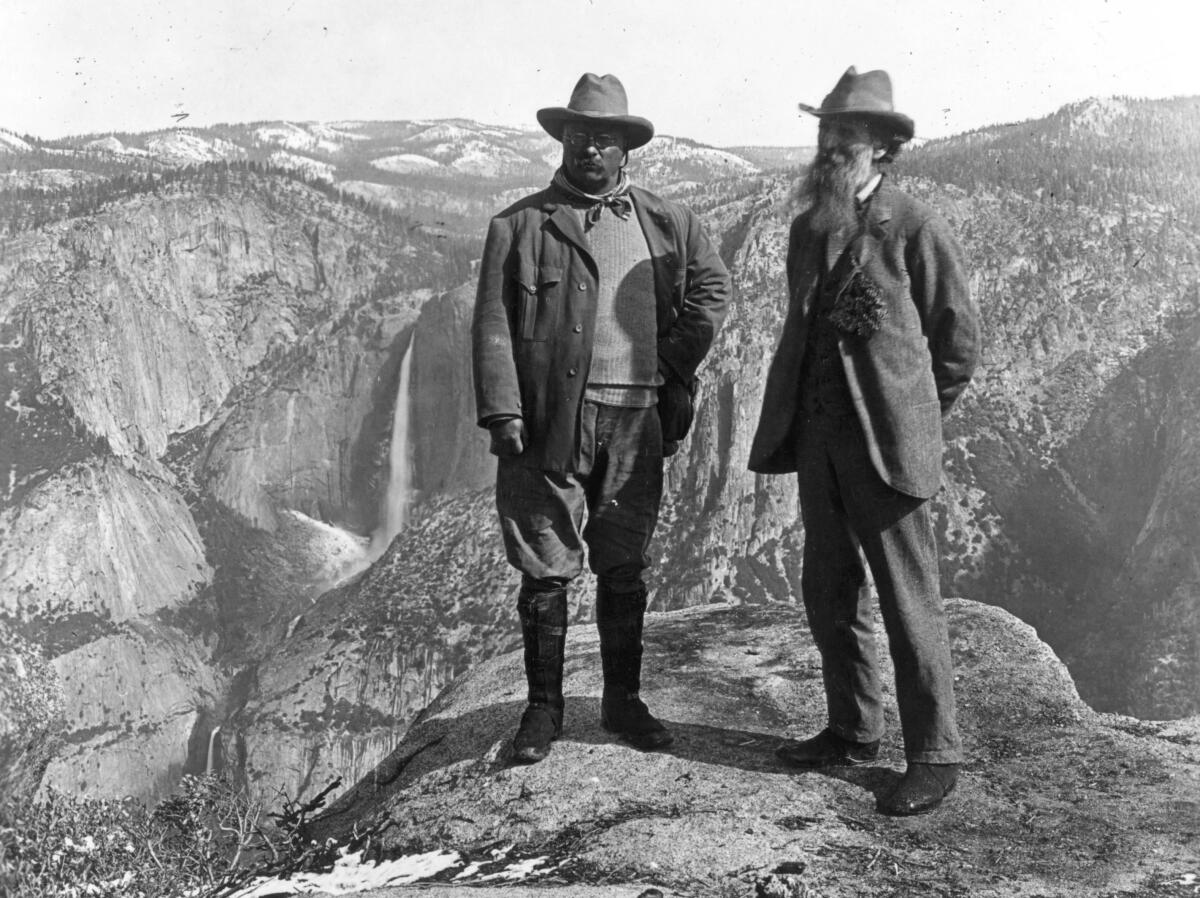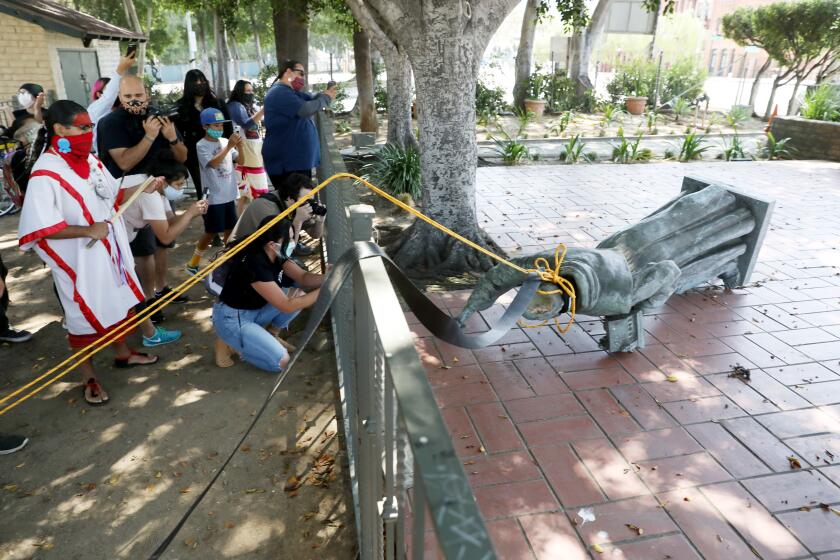Sierra Club calls out the racism of John Muir

- Share via
John Muir is a towering figure in the environmental movement. He saved Yosemite Valley, helped form the National Park Service and influenced generations with his passionate calls to protect and revere nature.
But on Wednesday, the Sierra Club — which Muir co-founded — acknowledged a darker part of Muir’s history.
“He made derogatory comments about Black people and Indigenous peoples that drew on deeply harmful racist stereotypes, though his views evolved later in his life,” the environmental group said in an article posted on its website. “As the most iconic figure in Sierra Club history, Muir’s words and actions carry an especially heavy weight. They continue to hurt and alienate Indigenous people and people of color who come into contact with the Sierra Club.”
The club said it was addressing Muir’s racism in the spirit of reckoning with the past following protests over the death in police custody of George Floyd. In the wake of Floyd’s death, numerous Confederate monuments have been taken down, as well as some statues of Christopher Columbus and Father Juniper Serra, another founding father of California.
California confronts its racist, colonial past as statues fall, mascots are renamed and a town debates changing its name that honors a Confederate general.
“It’s time to take down some of our own monuments, starting with some truth-telling about the Sierra Club’s early history,” the organization said. In addition to noting Muir’s history, the post also said that two other club founders — Joseph LeConte and David Starr Jordan — were white supremacists and that Jordan was a leading believer in eugenics.
Muir is one of the most revered figures in California history. His writings greatly influenced the environmental movement. But in recent years, there has been a growing debate about his influence and relevance.
A 2014 Times article noted Muir’s hatred of indigenous Californians and his support for pushing Native Americans off their lands.
“It is essential that we try to understand John Muir in all his complexity,” Laura Pulido, a professor in USC’s Department of American Studies and Ethnicity, told The Times in the article. “He was a man of his times, who actively worked to displace California Indians by taking their lands.”
Others have noted that many of the landmark sites Muir saved were stolen from indigenous people, often by force. Before Muir arrived in Yosemite, it was home to native Californians who died in large numbers from disease and slaughter when Europeans arrived and pushed them out.
“Muir was depressingly conventional on matters of race, afflicted with a garden-variety Victorian white supremacism,” writer Daniel Duane wrote in a Times opinion article in 2015. “But he was an otherwise harmless and decent man; my point is really just that Muir experienced Yosemite as God’s empty paradise only because armed men stole the land by violence 17 years before he arrived in 1868.”
Some have also argued that Muir’s message missed key environmental issues the world is facing today, such as population growth, urban sprawl, demographic shifts and climate change.
“Critics also see a correlation between the emotional, biblical language of Muir’s writings and the demographic makeup of national park visitors and the ranks of the largest environmental organizations — mainly aging, white Americans,” the article added.
The Sierra Club outlined plans to make the group better reflect the diversity of America today. The organization has wrestled with Muir’s legacy in the past. In one article on its website, a writer carefully examined Muir’s writings and found both racism and a growing admiration for Native Californians as he got older.
That review found that Muir held bigoted views toward Indians (“he used such negative terms as ‘dirty,’ ‘garrulous as jays,’ ‘Superstitious,’ ‘deadly,’ ‘lazy,’ ‘squirrelish,’ and ‘wife stealing’ to describe California Indians,” the report said). But later in life, he came to admire their stewardship of the land and expressed concern about the cruel ways they were treated.
Floyd’s death has sparked a new look at the racism and violence inflicted on Native Californians.
State officials removed a statue of Christopher Columbus from the Capitol rotunda in Sacramento this summer. A statue of Serra was pulled down on Olvera Street in Los Angeles, with protesters saying the founder of the Spanish mission system enslaved and abused Indians.
More to Read
Sign up for Essential California
The most important California stories and recommendations in your inbox every morning.
You may occasionally receive promotional content from the Los Angeles Times.












